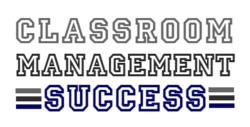
A child with special needs also needs to genuinely feel included. May it be the in the community or in the classroom. There is a sense of emotional well-being and stability derived from friendships that allow children to be more receptive and open to learning new concepts. A child with special needs is not excluded into this sense of inclusion. They should also have friends–friends who have and don’t have special needs.
Friendship in the classroom stems from a sense of belonging and relating to other children in the class. It is the teacher’s role to help create these friendships and teach how to maintain them among the students in the inclusive classroom.
There are several ways for the teacher to stimulate friendship in the classroom.
One is to identify her all her students’ interests and create groups for those who are like-minded. This requires that the teacher knows all her students personally. You can start with observations; what are the things they like to play with? What are the things they are good at? What do they like to do after school?
Special needs students all have a talent or an ability that they are especially good at. You can find them a group that has the same interests or have the same talents as they are.
You can also spark up conversations, say about the latest and greatest movie in the theaters. See how your students react. During recess or lunch time, they might talk about it.
 Another way to stimulate friendships in the classroom is to highlight their strengths. Each student has a different skill set apart from their classmates’. The teacher can recognize and highlight these strengths during class discussions, activities, and projects, by giving leadership opportunities so they will feel valued and confident.
Another way to stimulate friendships in the classroom is to highlight their strengths. Each student has a different skill set apart from their classmates’. The teacher can recognize and highlight these strengths during class discussions, activities, and projects, by giving leadership opportunities so they will feel valued and confident.
When there’s an opportunity, encourage students to showcase what they’re good at. This will also bring mutual respect among the students and eventually form friendships.
The last technique you can do as a teacher to create friendships inside the classroom is to provide opportunities to emphasize social skills. You can have group plays, group activities and group projects to teach skills like how to communicate and problem-solve with others. You are also encouraging teamwork. And teamwork always leads to friendships being formed.
These are just some techniques you can do in the classroom to encourage building of friendships in the classroom. There are more ways and strategies that are “not in the book”. Feel free to share with us your strategy–how do you create organic and valuable friendships in the Special Education classes?


Leave a Reply